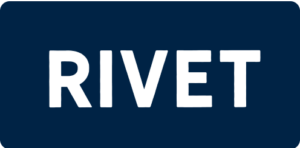11 questions with Dustin Acker, Implementations Manager
Changing careers is daunting. After 23 years working construction, our Implementations Manager Dustin Acker developed an affinity for Workforce Management. It took him six months of using the RIVET Workforce Management Platform as a contractor to make the jump from construction to construction tech. He still works with contractors every day, but now it’s from a different perspective.
Watch Dustin’s full interview here:
Start today.
Adopting the RIVET Workforce Management Platform can have a huge impact on your field productivity and profitability.
How did you get your start in construction?
My dad owned a steel stud and drywall company. He’s since retired. I worked with him for a little bit. Not very long after, I realized I just wouldn’t be able to work for my dad. I couldn’t get any respect from the other coworkers by being the boss’ kid. So I went into a different industry, and that’s how I decided on the electrical trade versus the carpentry trade.
I started the Monday after I graduated high school, working for a contractor as a helper for the summer, went on to get my college degree. Continued working for that contractor part time through the summers, times off everything else. And once I got my degree, I started my apprenticeship.
What were the roles you held? What was the journey like from that first job to wondering if you wanted to jump to a construction tech company?
I started as a helper, then apprentice, journeyman, foreman, general foreman, superintendent, general superintendent, construction services manager, Director of Construction Services. It was a very long 23 year journey. A lot of trying times, a lot of very rewarding [times]. I found myself in the right place at the right time. A lot of times in my career, you know, I got a lot of great opportunities. I don’t think I would change any of it.
You worked an entire career as a contractor, and held so many titles. What was the biggest change during that part of your career?
The biggest one would be when I transitioned from being on the field side of the industry, going into more of an office type of management role. Your day to day was significantly different than when you’re just out with the goal of getting one job done. You were managing a ton of people, a ton of different trades and everything. But then starting to look at all of the work the company has globally was just a completely different process and had a big learning curve.
Why did you transition from construction to construction tech?
Workforce Management has been somewhat of a career passion of mine for the last seven years. I get asked the question all the time, “What do you like about doing manpower? It sucks.” Well, if you can find the right solution to the problem it sucks a lot less. Liking the platform and using it for the last six months I just decided why not? I can help other contractors and make manpower suck a little less.
[Construction tech] is a completely different industry. The pace is a little bit different. Construction is always go, go, go. You’re always drinking from a fire hose, you’re always just trying to solve the next problem. Here it’s, I don’t wanna say laid back. It’s just a completely different philosophy; different types of people coming together from different backgrounds, which I think works out really well.
What was the most rewarding part of working construction?
Even to this day, probably just driving around town and seeing buildings that I helped either build physically or worked on mentally trying to plan the project or, you know, finding the right resources to get the job done. And then, I had a ton of awesome coworkers over the years. It was very rewarding and almost all of them are absolutely lifelong friends.
What was the most challenging part of working construction?
Labor Planning, whether dealing with a labor shortage or, in some cases, a labor surplus.
What makes construction Labor Planning so stressful?
You’re dealing with people’s livelihood. So if you’ve got to lay some people off, for example, last year, there was a time where we had to do a significant layoff. Those people are out of job, they’re not collecting a paycheck.
Or other people are screaming for help and you just can’t get them the resources they need. So they’re stressed because they’re not getting their job done on time. It’s really hard to find a balance where there’s just the right amount of people to get the job done.
How does RIVET solve that problem?
Utilize one of its core tools – Forecast – and you’re able to have a best guess [at labor] early on using some tried and true best practices. They’ve been researched to help build a Forecast early in the project.
Then you can start scheduling people to the job, utilizing certifications and tag filters to get the right people on the right job at the right time, and then get them off that job and on to the next job. Then you keep rinsing and repeating the process.
I’ve used multiple Workforce Management platforms, as well as spreadsheets of different varieties over the years. And RIVET continues to grow, just hitting it out of the park with new features and making it better and better for the user experience.
How does RIVET make construction easier?
By giving company leaders, operational leaders and project stakeholders all the information that relate to their specific job duties at their fingertips. The company leaders can look at different dashboards, make selections on what jobs they should pursue, whether they should put more margin on that job.
Operation leaders can see where all the people are, who they need to reallocate to what jobs and then the project stakeholders, a project manager, for example, is able to really build out his own Labor Plan. They can request individuals, see who’s on the job, who they need when and then communicate that through to the operational leaders to make those decisions. It’s a seamless process that doesn’t take a bunch of face-to-face time or phone calls. Everyone can see what each person is doing inside the platform.
This allows you to have a seamless process to make informed decisions on projects you should be pursuing, amount of margin you should be putting on these projects. It helps you make well-informed scheduling decisions on projects you already have.
RIVET streamlines the process, allowing operational leaders to be very efficient at moving their individuals from job site to job site. It also creates increased profit margins by allowing you to get the right individual to the job at the right time, utilizing Tags and Certifications.
How do Tags and Certifications help contractors?
In the electrical contracting industry, once everyone works their way up to a journey worker, they’re essentially the same classification. However, they have many different attributes: what they excel at installing, what they excel at doing. For example, someone might have a fire alarm specialty. Someone might specialize in installing large conduit.
Utilizing Tags, you can tag all your workers with what they excel at. So when that portion of the project comes up, you can get the right resource to it because if someone specializes in fire alarm, you don’t want them installing switch gear.
What advice would you give someone looking to jump from construction to construction tech?
The construction industry isn’t going anywhere. It’s definitely changing and tech is gonna be the biggest factor to that. If, like me, there’s an aspect of the construction industry that you’re passionate about, just go for it. If it doesn’t work, you can always fall back on the construction industry.

